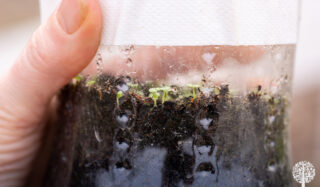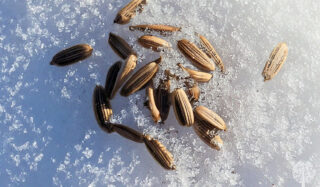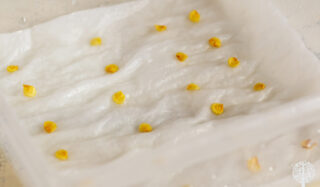Did you know that many seeds native to colder climates require a cold period to germinate?
What is cold stratification?
Seed stratification is the process of simulating the natural conditions that seeds need for germination. Some seeds require warmth, others cold and wet, called cold stratification. In nature, this happens as plants drop their seeds to the ground in the fall. They overwinter under a blanket of snow or the natural mulch of fallen leaves, and in the spring, as temperatures rise, the seed is triggered to break out of dormancy and germinate.
But what happens to the seeds we buy from a store? These seeds are no longer exposed to the natural cycles of freezing and thawing. How do we know which seeds need cold to germinate? A good rule of thumb is to go by the lowest temperature for your climate zone and if the seeds are considered native to your area. Seed-producing plants, indigenous to climate zones 3-7, typically require some cold to break their dormancy and germinate. The seed packet may tell you, or you can ask a local nursery, check online, or call a native seed company if you are unsure if the seed fits this category.
Once you have determined what the seed needs, there are easy ways to give it the cold it needs.

Cold Stratification Methods
Refrigerator Method
Wet a paper towel, place the seeds on it and fold the towel to contain them. Place in a plastic bag and keep in the refrigerator at 33°F to 40°F. Check weekly to ensure the seeds remain moist but not soggy. Plant them out in spring.
Outdoor Method
Sow seeds directly into the soil in late fall. The seeds will benefit from the cold temperatures throughout winter and break dormancy by spring. Ensure your planting area has good drainage to prevent water logging.
Cold Frame Method
Place seed trays inside a cold frame. The cold frame keeps the temperatures stable and helps you monitor moisture levels.
Snow Method
Scatter the seeds on top of the snow in late winter. As the snow melts, it will carry the seeds into the soil, where they will experience the remaining cold before germination.

Ice Cube Method
Fill an ice cube tray halfway with water and freeze. Remove from the freezer and let the cubes sit at room temperature for a few minutes. Place the seeds in the film of water that has formed on each cube and refreeze. After the required stratification period (generally two weeks to a month), pop out the ice cubes with the frozen seeds inside. Place them on top of the soil in your germination pots. The seed settles into the soil as the ice cube melts.
Mimicking Mother Nature
Temperatures between 33°F and 40°F for a couple of weeks to a month are enough for most seeds to receive the cold they need. Remember that timeline when sowing seeds, and adjust the seed planting schedule to match. Mimicking the cold for these seeds will create a healthier plant.
